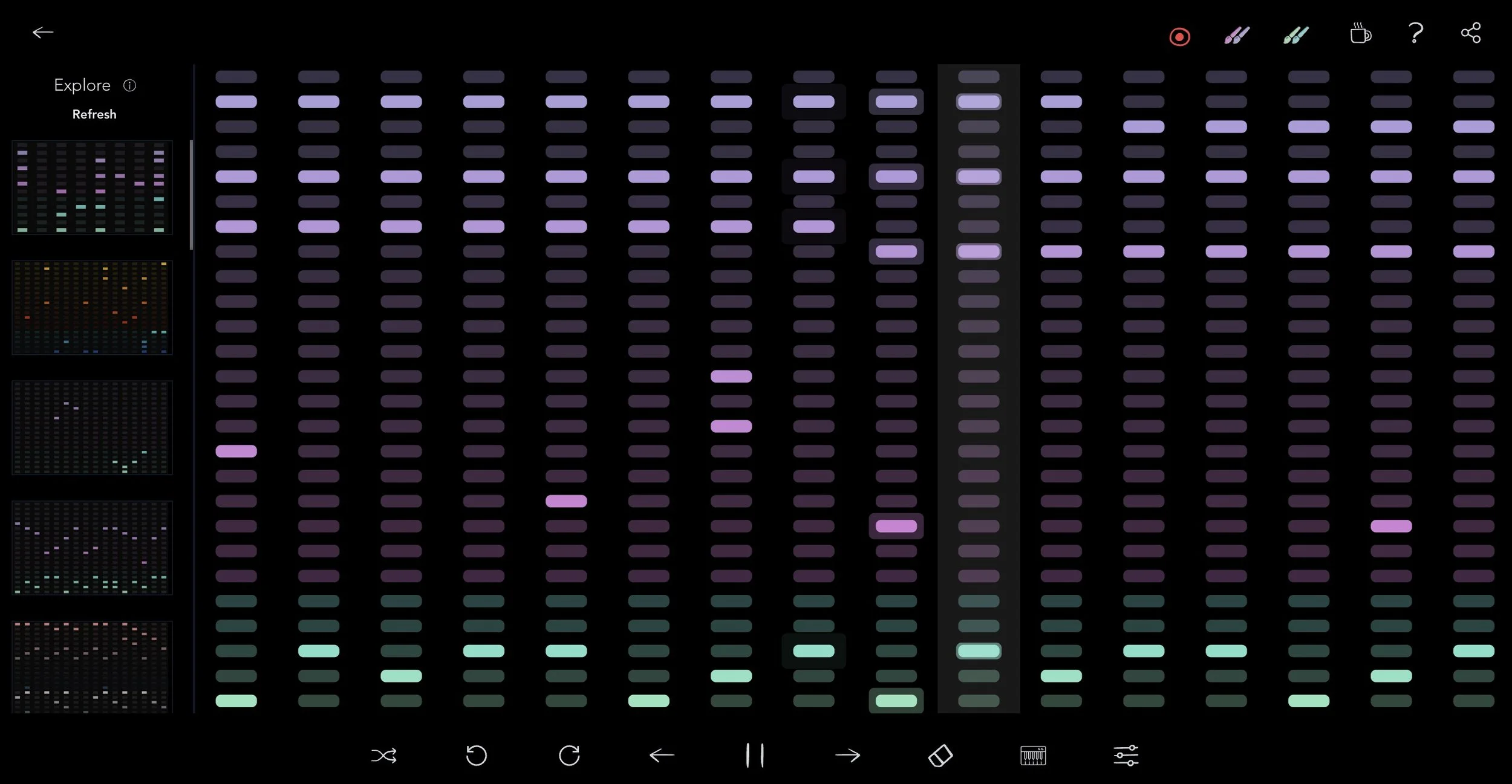Tool: DrawBeats
DrawBeats is a wonderful FREE pattern sequencer that runs in a browser, and you should definitely bookmark the site today and share it with your students!
I came across DrawBeats about a year ago when I was looking through an incredible site that has LOTS of free resources for music teachers called Elemental Musical Adventures. So what can you do using DrawBeats?
DrawBeats is a 4-bar pattern sequencer with two tracks - pitch and rhythm. The bottom 6 slots are for rhythm patterns (also delineated by a change o color) and the top 14 slots represent different pitches in a scale.
You can create melodies with accompanying rhythms using three sets of sounds: acoustic (represented by a piano), synthesized (represented by a synth) and 8-bit video game (represented by a video game controller).
The Advanced Settings button (represented by a mixer icon) allows you to increase the number of measures/beats in your pattern; choose a key, scale, and octave range; use the randomizer to create some pretty cool sounding patterns; and add effects such as reverb, delay, wah and distortion. You can even add a Swing feel to your pattern in the Advanced Settings menu.
You can download your patterns to use in other programs, like Soundtrap, as a .webm file which you can then convert to .mp3 using a site like https://convertio.co/webm-mp3/
You can use the Explore menu on the left side of the screen to listen to patterns from well known songs and some originals to get inspired to write your own patterns.
You can Share your patterns with others using the Share button and a URL.
So how can you use DrawBeats in your music classroom?
I find that music teachers are ALWAYS asking for free and low-cost creativity tools for their students to use with their Chromebooks and other devices. Many of the free tools that are out there are what I call “one trick ponies” as they can only be used for one or two simple activities and the students can rarely save their work using them. Because DrawBeats allows you to download your pattern, it becomes a VERY useful tool.
Piano roll notation is what DrawBeats uses - basically dashes on a grid that, when clicked, make a pitch sound. In my experience, this is a PERFECT way to get non-music reading students up and running with music creation quickly, and it is also using one of the most common interfaces in modern music software. Students will understand it pretty quickly and you just might be surprised what they can create using it. Have your students create 4-bar loops for use in other programs - a great way to scaffold student learning when they start using pre-made loops. By creating their own loops, they are gaining agency in their creative endeavors.
I strongly recommend trying DrawBeats out with your students in class - especially if you have an extra 10-15 minutes at the end of a lesson. See what they do. I’ll bet they’ll like it as much as I do :)
